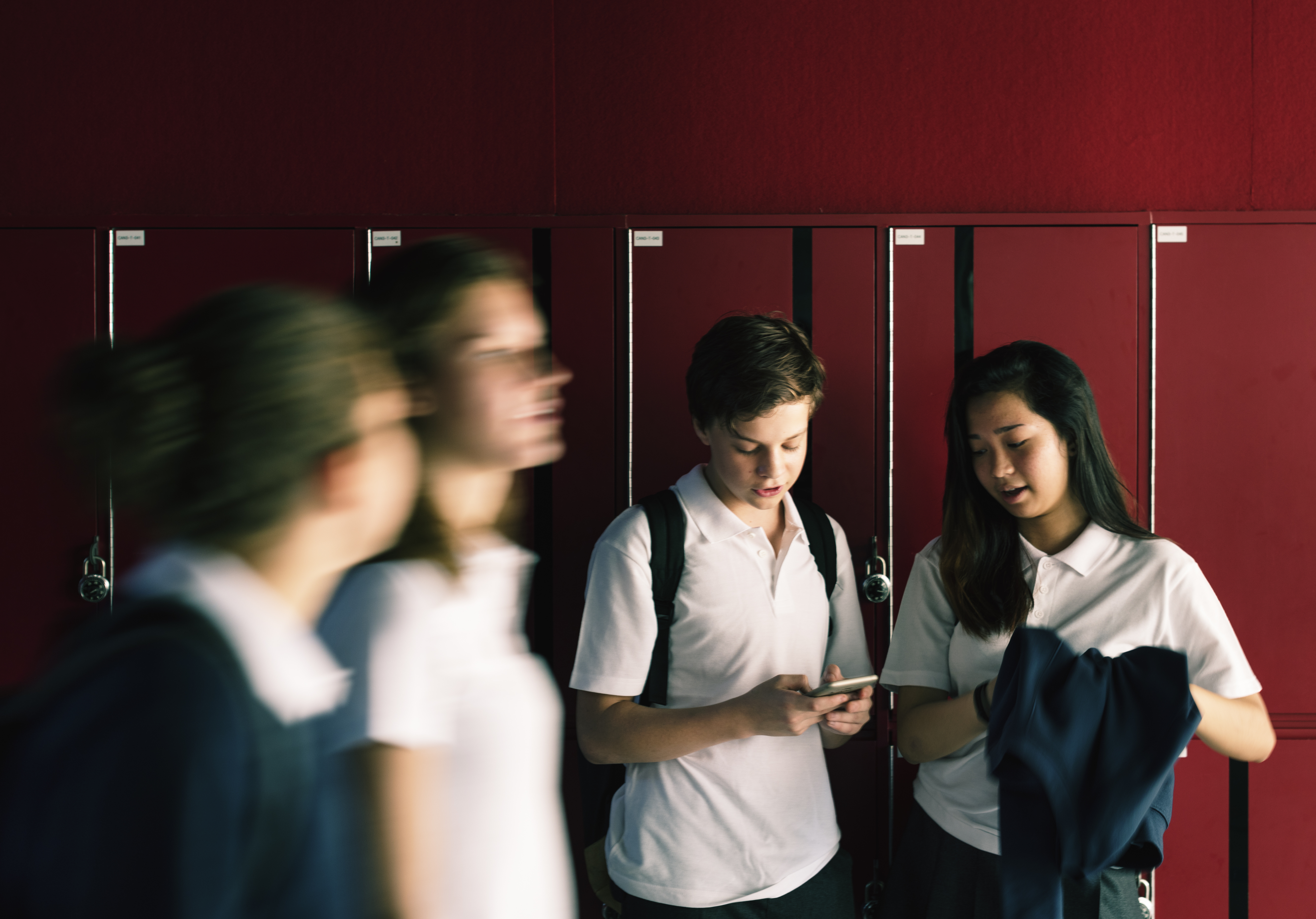Beyond the classroom: Tips for supporting peer relationships online
How can we support students to confidently (and safely) connect with their peers online?
How can we support students to confidently (and safely) connect with their peers online?

It’s now the norm for students to go to school, then come home and keep chatting, sharing videos or playing with their friends online.
Platforms like TikTok, BeReal, WhatsApp and Instagram allow us to access so much information in seconds, connect with our friends from anywhere in the world, and we can rally people to take positive action on social issues. It’s pretty incredible.
The flip side is that we’ve also never been so connected and young people are starting their online experience younger. Like a famous superhero once said – “with great power comes great responsibility”, and sometimes people don’t make the best choices online.
We regularly work with schools who are experiencing instances of cyberbullying in group chats, image-based abuse, and fake Instagram accounts (“Finstas”) made to target an individual student – or whole year levels. These online experiences lead to issues that grow beyond the online space and play out in the classroom. This interrupts lesson time and becomes another problem for teachers to deal with.
From our perspective as cyber-safety experts who have been working with schools through this period, a perfect storm has been brewing:
Firstly, we want to reiterate that if you are experiencing this at your school or in your classroom, you are not alone. Previous generations have never been so connected before and the online world presents young people with a challenge in how they choose to navigate and use it.
The way we can support students is to provide proactive strategies to make good online choices.
At PROJECT ROCKIT we believe the online world provides young people with opportunities, but can also present challenges for some. Educators and school communities can play a key role in empowering students and equipping them with the right tools to navigate the online world safely.
We want students to feel safe and confident they are making the right choices online, so here are our favourite ways supporting young people to feel empowered online.
We know this is the go-to one students hear about all the time, but blocking and reporting someone really is the fastest and easiest way to get support online – it’s also the safest because we’re able to do this confidentially.
Platforms like Instagram and TikTok have introduced tools where you have the option to restrict video comments to no one, just friends or everyone, or you can filter them so you take back the power and decide what appears on your posted content. When it’s enabled, comments aren’t displayed unless you approve them. Another handy feature is that you can delete or report multiple comments at once if someone is spamming you
The eSafety Office supports young Aussies if they run into trouble online. You can make a formal complaint about cyberbullying, image-based abuse (sharing, or threatening to share, intimate images without the consent of the person shown) or illegal and restricted online content HERE and they will be in touch with how they can support.
Everyone has the power to make a difference and each student has a different confidence level to intervene. If your students see a peer being harassed online and are confident to safely call something out publicly to shut down the harassment, simply commenting “dislike” on a post or interrupting to say what’s happening isn’t cool can shut down the harassment.
If students don’t feel comfortable or are not able to call someone out publicly, but still want to take action, we encourage them to reach out to the student being harassed via private message to check-in and see if they are okay. A small act can go a long way.
No one deserves to be bullied or trolled, so empower students to block and report If something is going down online, but encourage them to get screenshots first. It’s very difficult when something online comes into the classroom, but you’re unable to see the harassment, so encourage students to get proof so you can provide appropriate supportive action.
The online world moves and changes fast so recommend facilitating a regular conversation in class about the platforms students are using. This is a space to also celebrate the platforms young people are having fun and learning things on. Discuss how they are using them, what content and creators they are enjoying, how long they spend online and talk about the different safety tools the platform provides them.
It can be daunting coming to a teacher for support, so let your students know how they can come to you or other teachers for support before things escalate too far. This could be speaking to you 1:1 in-person or it could be emailing you because it’s sometimes easier to ask for help in writing first.
Remind students that they are the very first generation to be born into a connected, online world. This comes with incredible opportunities, but also great responsibility. Let them know that they can shape and curate their online world and that starts with how they treat one another online.
Our relationship to the online world ebbs and flows as quickly as the platforms we use and the trends we follow online change. We can support young people to confidently navigate online spaces with kindness and empathy when we keep the conversation going.
We hope these tips help you and your students with the conversation.
Receive updates on programs, progress and impact.